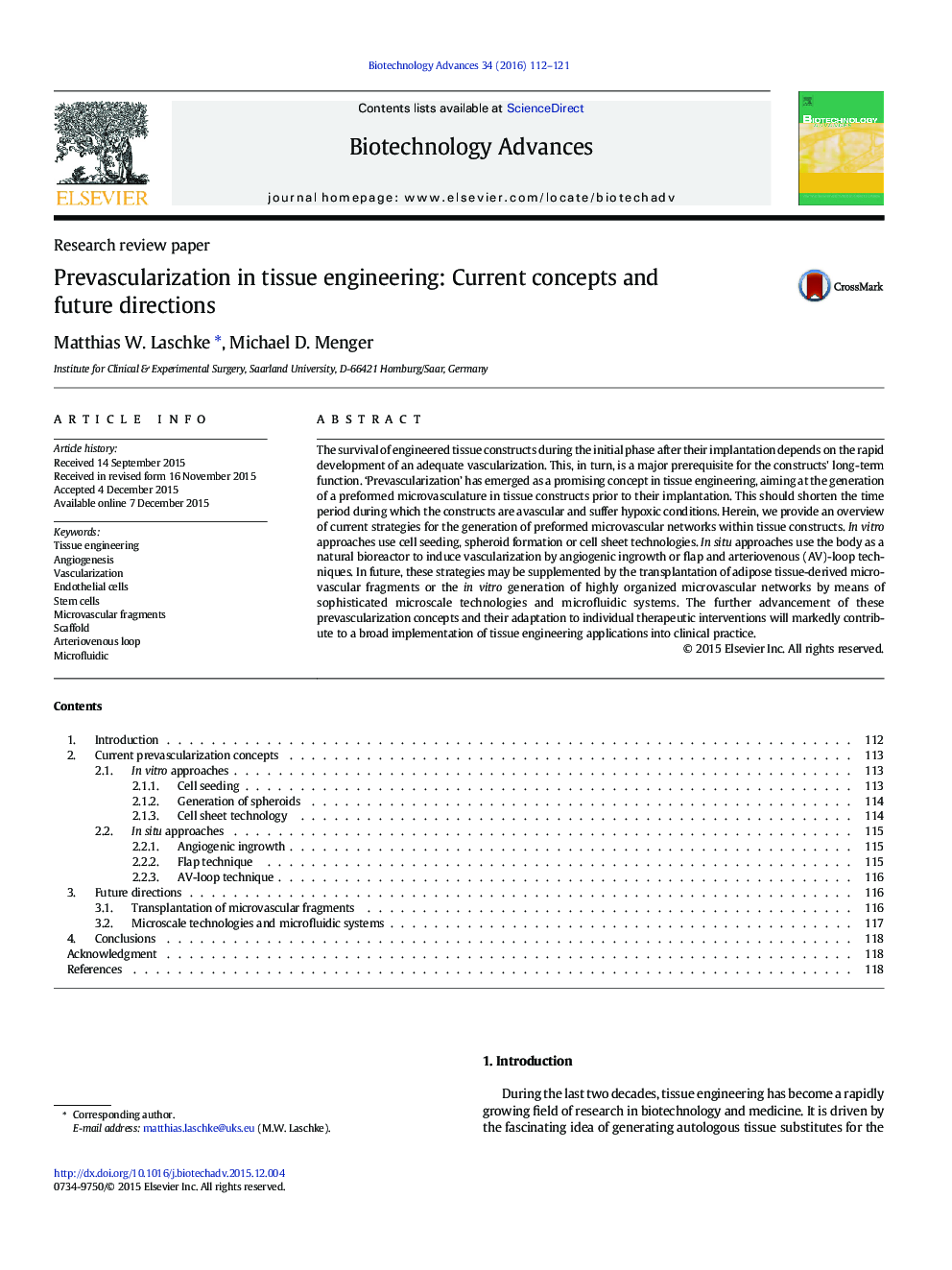| Article ID | Journal | Published Year | Pages | File Type |
|---|---|---|---|---|
| 14186 | Biotechnology Advances | 2016 | 10 Pages |
The survival of engineered tissue constructs during the initial phase after their implantation depends on the rapid development of an adequate vascularization. This, in turn, is a major prerequisite for the constructs' long-term function. ‘Prevascularization’ has emerged as a promising concept in tissue engineering, aiming at the generation of a preformed microvasculature in tissue constructs prior to their implantation. This should shorten the time period during which the constructs are avascular and suffer hypoxic conditions. Herein, we provide an overview of current strategies for the generation of preformed microvascular networks within tissue constructs. In vitro approaches use cell seeding, spheroid formation or cell sheet technologies. In situ approaches use the body as a natural bioreactor to induce vascularization by angiogenic ingrowth or flap and arteriovenous (AV)-loop techniques. In future, these strategies may be supplemented by the transplantation of adipose tissue-derived microvascular fragments or the in vitro generation of highly organized microvascular networks by means of sophisticated microscale technologies and microfluidic systems. The further advancement of these prevascularization concepts and their adaptation to individual therapeutic interventions will markedly contribute to a broad implementation of tissue engineering applications into clinical practice.
